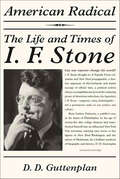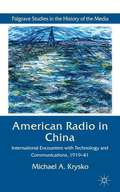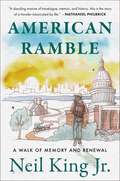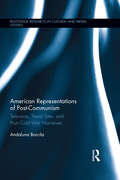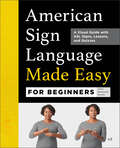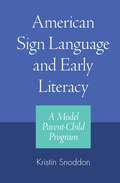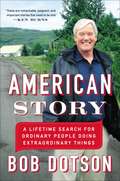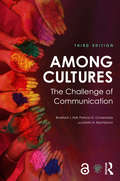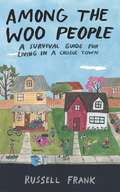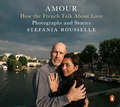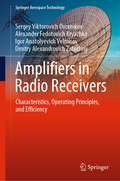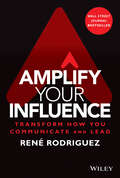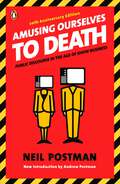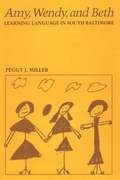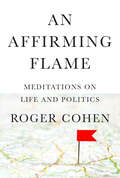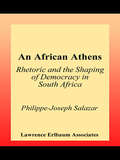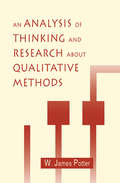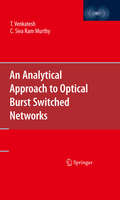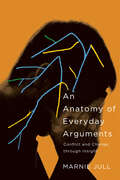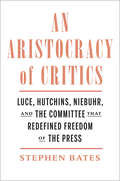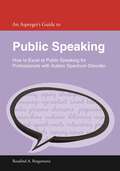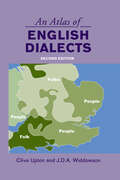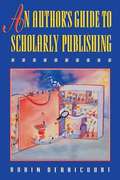- Table View
- List View
American Radical: The Life and Times of I. F. Stone
by D. D. GuttenplanPopular Front columnist and New Deal propagandist. Fearless opponent of McCarthyism and feared scourge of official liars. Enterprising, independent reporter and avid amateur classicist. As D.D. Guttenplan puts it in his compelling book, I.F. Stone did what few in his profession could—he always thought for himself. America's most celebrated investigative journalist himself remains something of a mystery, however. Born Isidor Feinstein in Philadelphia, raised in rural New Jersey, by the age of 25 this college drop-out was already an influential newsman, and enjoying extraordinary access to key figures in New Deal Washington and the friendship of important artists in New York.It is Guttenplan's wisdom to see that the key to Stone's achievements throughout his singular career—and not just in his celebrated I.F. Stone's Weekly—lay in the force and passion of his political commitments. Stone's calm, forensic, yet devastating reports on American politics and institutions sprang from a radical faith in the long-term prospects for American democracy. His testimony on the legacy of American politics from the New Deal and World War II to the era of the civil rights struggles, the Vietnam War, and beyond amounts to as vivid a record of those times as we are likely to have. Guttenplan's lively, provocative book makes clear why so many of his pronouncements have acquired the force of prophecy.
American Radio in China
by Michael A. KryskoInterwar era efforts to expand US radio into China floundered in the face of flawed US policies and approaches. Situated at the intersection of media studies, technology studies, and US foreign relations, this study frames the ill-fated radio initiatives as symptomatic of an increasingly troubled US-East Asian relationship before the Pacific War.
American Ramble: A Walk of Memory and Renewal
by Neil King“American Ramble is a dazzling mixture of travelogue, memoir, and history. At times profound, funny, and heartbreaking, this is the story of a traveler intoxicated by life. I couldn’t put it down.” — Nathaniel PhilbrickA stunning, revelatory memoir about a 330-mile walk from Washington, D.C., to New York City—an unforgettable pilgrimage to the heart of America across some of our oldest common ground. Neil King Jr.’s desire to walk from Washington, D.C., to New York City began as a whim and soon became an obsession. By the spring of 2021, events had intervened that gave his desire greater urgency. His neighborhood still reeled from the January 6th insurrection. Covid lockdowns and a rancorous election had deepened America’s divides. Neil himself bore the imprints of a long battle with cancer.Determined to rediscover what matters in life and to see our national story with new eyes, Neil turned north with a small satchel on his back and one mission in mind: To pay close attention to the land he crossed and the people he met.What followed is an extraordinary 26-day journey through historic battlefields and cemeteries, over the Mason-Dixon line, past Quaker and Amish farms, along Valley Forge stream beds, atop a New Jersey trash mound, across New York Harbor, and finally, to his ultimate destination: the Ramble, where a tangle of pathways converges in Central Park. The journey travels deep into America’s past and present, uncovering forgotten pockets and overlooked people. At a time of mounting disunity, the trip reveals the profound power of our shared ground.By turns amusing, inspiring, and sublime, American Ramble offers an exquisite account of personal and national renewal—an indelible study of our country as we’ve never seen it before.
American Regulatory Federalism and Telecommunications Infrastructure (LEA Telecommunications Series)
by Paul TeskeDuring this era of construction of the information superhighway, this volume presents a prudent analysis of the pros and cons of continuing state regulation of telecommunications. While interested parties either attack or defend state regulation, careful scholarly analysis is required to strike the appropriate balance of regulatory federalism. Focusing on regulation in the 1990s, it uses a positive political economy perspective to analyze enduring state-federal conflicts and to weigh the justifications and explanations for continuing state telecommunications regulation, or for changing its structure. It also considers normative concerns and makes recommendations about how to improve telecommunications policy. Seriously concerned with assessing the problems surrounding cost burdens for different categories of consumers, market entry for different firms, economic growth and the information infrastructure, global competitiveness, and control over information, this volume attempts to provide answers to the following specific questions: * How are states regulating telecommunications in the brave new world of global markets, fiber optics, and digital technology? * Do states vary significantly in their regulatory models? * How are the politics of state and federal regulation different? * Would a different federal-state relationship better serve national telecommunications goals in the future? To tackle these critical questions, the scholarly perspectives of economists, lawyers, political scientists, and telecommunications consultants and practitioners are employed.
American Representations of Post-Communism: Television, Travel Sites, and Post-Cold War Narratives (Routledge Research in Cultural and Media Studies)
by Andaluna BorcilaWith the televised events of 1989, territories of Eastern and Central Europe that had been marked as impenetrable and inaccessible to the Western gaze exploded into visibility. As the narratives of the Cold War crumbled, new narratives emerged and new geographies were produced on and by American television. Using an understudied archive of American news broadcasts, and tracing their flashes and echoes through travel guides and narratives of return written by Eastern European-Americans, this book explores American ways of seeing and mapping communism’s disintegration and the narratives articulated around post-communist sites and subjects.
American Sign Language Made Easy for Beginners: A Visual Guide with ASL Signs, Lessons, and Quizzes
by Travis Belmontes-MerrellLearn American Sign Language the easy way! Become a lifelong learner of American Sign Language (ASL) with this guide for true beginners. It breaks down ASL fundamentals and gives you step-by-step instructions for signing more than 400 vocabulary words, organized by practical topics like greetings, hobbies, times, places, and more.The building blocks of ASL—Lay the foundation for ASL learning as you explore the five parameters of signing: handshape, location, movement, palm orientation, and non-manual markers.Clear guidance for novices—Learn how to sign each vocabulary word with the help of detailed written directions and large, full-color photos, so you know you're doing it right even if it's your first sign ever.Lessons and quizzes—Put your new skills to the test with themed lessons designed for real-world conversations, and brief quizzes at the end of each section.Make learning ASL fun and easy with this top choice in American Sign Language books for beginners.
American Sign Language and Early Literacy: A Model Parent-Child Program
by Kristin SnoddonThe usual definition of the term "literacy" generally corresponds with mastering the reading and writing of a spoken language. This narrow scope often engenders unsubstantiated claims that print literacy alone leads to, among other so-called higher-order thinking skills, logical and rational thinking and the abstract use of language. Thus, the importance of literacy for deaf children in American Sign Language (ASL) is marginalized, asserts author Kristin Snoddon in her new book American Sign Language and Early Literacy: A Model Parent-Child Program. As a contrast, Snoddon describes conducting an ethnographic, action study of the ASL Parent-Child Mother Goose program, provided by a Deaf service agency in Ontario, Canada to teach ASL literacy to deaf children. According to current scholarship, literacy is achieved through primary discourse shared with parents and other intimates, which establishes a child's initial sense of identity, culture, and vernacular language. Secondary discourse derives from outside agents and interaction, such as expanding an individual's literacy to other languages. Snoddon writes that the focus of the ASL Parent-Child Mother Goose program is on teaching ASL through rhymes and stories and some facets of the culture of Deaf ASL users. This focus enabled hearing parents to impart first-language acquisition and socialization to their deaf children in a more natural primary discourse as if the parents were Deaf themselves. At the same time, hearing parents experience secondary discourses through their exposure to ASL and Deaf culture. Snoddon also comments on current infant hearing screening and early intervention and the gaps in these services. She discusses gatekeeper individuals and institutions that restrict access to ASL for young Deaf children and their families. Finally, she reports on public resources for supporting ASL literacy and the implications of her findings regarding the benefits of early ASL literacy programming for Deaf children and their families.
American Story
by Bob DotsonThe host of the NBC Today Show's popular segment shares his favorite stories of citizens making a difference around the country For the six million people who watch the Emmy Award-winning "American Story with Bob Dotson" on NBC's Today Show, Bob Dotson's reports celebrate the inspirational stories of everyday Americans. Dotson has been crisscrossing the country for more than forty years--logging more than four million miles--in search of people who have quietly but profoundly changed our lives and our country for the better. Now, in American Story, he presents a road map to the unsung heroes with thoughtful solutions to problems we all face, incredible ideas that work, and blueprints to living our dreams. *The boss who came out of retirement to start a new company for his former employees who could not find work *The truck driver who taught microsurgery *The man you've never heard of who has 465 profitable patents, second only to Thomas Edison *The doctor who developed the vaccine to prevent whooping cough, who didn't retire until age 104 In the tradition of Tom Brokaw's New York Times bestseller The Time of Our Lives, American Story is a deeply moving and endlessly fascinating alternative narrative for everyone who yearns to feel good about America. .
Among Cultures: The Challenge of Communication
by Bradford J. Hall Kristin A. Kirschbaum Patricia O. CovarrubiasAmong Cultures: The Challenge of Communication, Third Edition explores intercultural communication and the relationship between communication and culture, using narrative as a common and compelling thread for studying intercultural interactions. Anchored in the position that people make sense of their worlds through choosing and telling narratives to themselves and others, this text is replete with narratives and stories. Chapters address key aspects of intercultural communication, including verbal and nonverbal communication; stereotypes and bias; identity; conflict; diversity; and ethics. Using an interpretive approach to intercultural communication, the text helps students understand that although a person may appear different, his/her common sense is quite reasonable within a particular interpretive context. Resources are included to help students understand and explain the reasonableness of other cultural systems. The text includes activities for students to complete while reading, including self-assessments and nonverbal self-knowledge tests. Reflection questions within and at the end of each chapter promote thinking and discussion on each topic. With its unique approach to studying intercultural communication via real-life narratives, this text facilitates a deep understanding of the cultural aspects of communication. In providing the narratives of others, it encourages students to tell their own stories and build a strong foundation for communicating across cultures. New to the Third Edition: New chapter—"What Role Does Culture Play in Contemporary Contexts?"—explores intercultural communication as it relates to the environment, health, and technology. New sections on identity, silence, and terms of address as important communicative practices in intercultural settings. Updated sections on honorifics, key terms, social dramas and the golden approaches to ethics.
Among the Woo People: A Survival Guide for Living in a College Town (Keystone Books)
by Russell FrankIn the mid-nineties, Russell Frank left a peaceful life in rural California to raise three kids in a town saturated with fraternities, late-night undergrad fast food haunts, and rowdy football crowds. Among the Woo People recounts his two decades living—and surviving—in State College, Pennsylvania, the often-chaotic home of Penn State University.This humorous peek at life in a college town smack-dab in the middle of rural Pennsylvania chronicles a changing community over the course of two eventful decades. A professor of journalism, former columnist for the Centre Daily Times, and contributor to StateCollege.com, Frank has a unique perspective on living in the shadow of a university—especially on the tribe of nomadic young adults known as the “Woo people,” so named for their signature mode of celebratory communication. He invites readers into the routines of his hectic household as they embrace their new home, skewers the culture of intercollegiate sports, relates the challenges and peculiarities of teaching at one of the nation’s largest universities, and, most important, teaches us to be amused at college-kid antics and to appreciate their academic and real-world accomplishments, even as we anxiously tick off the days until semester’s end.From tales of missing porch furniture and red plastic cups in the bushes to a “Nude Year’s Eve” run by an octet of forty-somethings to the sweet relief of summer, Frank’s hilarious, insightful essays are indispensable for anyone who wants to survive, appreciate, and enjoy college-town life.
Amour: How the French Talk About Love--Photographs and Stories
by Stefania RousselleFrom award-winning journalist and filmmaker Stefania Rousselle, a stunning collection of photographs and essays that seek to understand the universality of love Journalist and filmmaker Stefania Rousselle found herself overwhelmed and dejected with the horrors of the news after covering terrorist attacks, human trafficking, and the rise of extremism. To renew her faith in humanity, she took off on a solo road trip across France, determined to see if love still exists. Traveling from village to village, farming towns to industrial cities, heart to heart, Rousselle sought out ordinary women and men, all to ask them one question, What is love?Collecting more than 90 personal testimonies, each one moving and beautiful in its own way, alongside over 100 intimate photographs, Rousselle reveals the many facets of love, and discovers that love can still be found even in the darkest of places. From a baker in Normandy to a shepherd in the Pyrenees, from a tree trimmer in Martinique to a mail woman in the Alps, Amour is a visual testament to love in all its many forms.
Amplifiers in Radio Receivers: Characteristics, Operating Principles, and Efficiency (Springer Aerospace Technology)
by Dmitry Alexandrovich Zatuchny Sergey Viktorovich Dvornikov Alexander Fedotovich Kryachko Igor Anatolyevich VelmisovThis book presents the basics of building various types of amplifiers, the most widely used in the composition of modern specialized radio receivers, as well as the principles of building digital radio receivers. The rapid development of modern telecommunications systems, aviation equipment, and space systems for various functional purposes, as well as new information technologies, is inextricably linked with the theory of building radio receivers. Radio receivers are an integral part of the radio line, which largely determine the quality of its operation, both in normal operating conditions and in a complex interference environment. Since the creation of the first lightning detector in 1895, the technique of radio receiving devices went a long way to the development of modern automated digital systems.
Amplify Your Influence: Transform How You Communicate and Lead
by Rene RodriguezApply the latest advances in neuroscience to your real-world persuasion and influence strategies for immediate results In Amplify Your Influence: Transform How You Communicate and Lead, celebrated keynote speaker, trainer and leadership coach Rene Rodriguez delivers an eye-opening roadmap to using applied neuroscience to improve readers’ communication ability, critical thinking, cultural awareness, and leadership skills. Based in the author’s proprietary AMPLIFII system and methodologies he has taught to over 100,000 participants around the world, the book offers practical tips, useful frameworks, guided practice, and simple application exercises to help readers create new and lasting behaviors that effect change in their life and work. Amplify Your Influence shows leaders how to: Leverage various human motivators for positive outcomes and results Frame and communicate their ideas in a way that encourages engagement and gets an active response Intentionally choose a communication style based on their influence objective Perfect for executives, managers, sales professionals, and other business leaders, Amplify Your Influence is required reading for anyone seeking to improve their ability to effect change in the people around them, whether they’re in the office, the boardroom, the classroom, or at home.
Amusing Ourselves to Death: Public Discourse in the Age of Show Business (Colección Ideas/tempestad Ser. #Vol. 2)
by Neil Postman Andrew PostmanWhat happens when media and politics become forms of entertainment? As our world begins to look more and more like Orwell's 1984, Neil's Postman's essential guide to the modern media is more relevant than ever."It's unlikely that Trump has ever read Amusing Ourselves to Death, but his ascent would not have surprised Postman.” -CNNOriginally published in 1985, Neil Postman’s groundbreaking polemic about the corrosive effects of television on our politics and public discourse has been hailed as a twenty-first-century book published in the twentieth century. Now, with television joined by more sophisticated electronic media—from the Internet to cell phones to DVDs—it has taken on even greater significance. Amusing Ourselves to Death is a prophetic look at what happens when politics, journalism, education, and even religion become subject to the demands of entertainment. It is also a blueprint for regaining control of our media, so that they can serve our highest goals.“A brilliant, powerful, and important book. This is an indictment that Postman has laid down and, so far as I can see, an irrefutable one.” –Jonathan Yardley, The Washington Post Book World
Amy, Wendy, and Beth: Learning Language in South Baltimore
by Peggy J. MillerAmy, Wendy, and Beth, the 1980 recipient of the New York Academy of Sciences Edward Sapir Award, is a lively in-depth study of how three young children from an urban working-class community learned language under everyday conditions. It is a sensitive portrayal of the children and their families and offers an innovative approach to the study of language development and social class. A major conclusion of the study is that the linguistic abilities of working-class children are consistent with previous cross-cultural accounts of the development of communicational skills and, as such, lend no support to past claims that children from the lower classes are linguistically deprived. Instead, Amy, Wendy, and Beth emerge as able and enthusiastic language learners; their families, as caring and competent partners in the language socialization process. Sound scholarship and original findings about a hitherto neglected population of children lend special value to this work not only for scholars in psychology, linguistics, and anthropology, but for educators and policymakers as well.
An Affirming Flame: Meditations on Life and Politics
by Roger Cohen&“For more than forty years Roger Cohen has ventured to every corner of the earth to chronicle the great upheavals of our age, but he&’s never lost sight of what really matters: love, hope, and all the mysteries of the human heart. Here, in this collection of columns that will take you from the streets of Kyiv to an execution chamber in Alabama, you can read him at his best.&”—Dexter Filkins, best-selling author of The Forever WarA collection of the finest New York Times columns written by Roger Cohen over more than a decade, accompanied by an original, twenty-thousand-word essay on the state of the worldThe countless readers who followed Roger Cohen&’s column and mourned its end responded above all to what they saw as the marriage in his writing of head and heart. That tenor permeates An Affirming Flame.During his twelve years as a columnist, Cohen aimed to hold power to account at home and abroad, in the name of freedom, decency, pluralism, and the importance of truth and dissent in open societies. He watched with alarm as the outside threat of 9/11 morphed into the internal threat of January 6. This time, the assailants were not jihadi terrorists; they were American white supremacists and seditionists convinced of American decadence but unable to see that they personified it. The threat to American democracy is clear.Cohen dissects this ominous American fracture. He explores themes of displacement, belonging, and his own imperiled craft of journalism. His examination of the rising tide of authoritarian rule takes him to China, and in Kyiv he sees the devastating impact of Vladimir Putin's Russian nationalism. With its trenchant consideration of the plight of refugees, COVID-19, the Israeli-Palestinian conflict, and the war in Afghanistan, Cohen's writing reflects his belief in the unquenchable human quest for dignity.He captures the fight to defend America&’s openness, democratic institutions, and ideals against the rising tide of retrogression, division, and assault on truth. This struggle, as Cohen writes, is also the world&’s. It is inseparable from the battle to save humanity from the creeping autocracy of the twenty-first century. As he writes, &“On lies is tyranny built.&”
An African Athens: Rhetoric and the Shaping of Democracy in South Africa (Rhetoric, Knowledge, and Society Series)
by Philippe-Joseph SalazarAn African Athens offers an analysis of a new ecology of rhetoric--the reshaping of a nation into a democracy through rhetorical means. Author Philippe-Joseph Salazar provides a general view of issues as they have taken shape in the apartheid and post-apartheid South African experience, presenting the country as a remarkable stage for playing out the great themes of public deliberation and the rise of postmodern rhetorical democracy. Salazar's intimate vantage point focuses on the striking case of a democracy won at the negotiating table and also won every day in public deliberation. This volume presents a full-scale rhetorical analysis of a democratic transformation in post-Cold War era, and provides a study of the demise of apartheid and post-apartheid from the standpoint of political and public rhetoric and communication. In doing so, it serves as a template for similar enquiries in the rhetorical study of emerging democracies. Intended for readers engaged in the study of political and public rhetoric with an interest in how democracy takes shape, An African Athens highlights South Africa as a test case for global democracy, for rhetoric, and for the relevance of rhetoric studies in a postmodern democracy.
An Analysis of Thinking and Research About Qualitative Methods (Routledge Communication Series)
by W. James PotterWritten for social science scholars who want to learn more about the qualitative way of thinking, this book addresses the full continuum of issues about the qualitative methodologies. At one end of that continuum are the deeply philosophical concerns of ontology and epistemology. At the other -- concrete -- end of that continuum are the practical issues of what is considered evidence: How does one go about gathering evidence? Where, when, and how does one analyze evidence? What are the alternative ways of dealing with tone and voice in writing qualitative research? The attention to practical, concrete issues makes this book useful as a handbook providing a great deal of vital information to scholars who want a guide to making decisions as they navigate their research questions through the qualitative realm. Uniquely qualified to write such a book, Potter has earned PhDs in both qualitative methods (with a concentration in linguistics and field studies) and in quantitative methods (with a concentration in social science theory and statistics). The book is not an ideological argument that glorifies one system of thinking while attempting to persuade the reader that other systems of thinking are bankrupt. Rather, the book presents a respectful, balanced analysis of the strengths and weaknesses of the qualitative approach. The book builds to a controversial final chapter entitled "Is Convergence a Possibility?" in which Potter synthesizes a conclusion from his analysis of a wide range of qualitative studies across three broad topic areas -- text focused research, audience focused research, and institution focused research -- and across seven major qualitative methodologies -- ethnography, ethnomethodology, reception study, ecological psychology, symbolic interactionism, cultural studies, and textual analysis. His conclusion is that not only is there a possibility of a convergence between qualitative and quantitative approaches, but that the convergence has already happened. The book includes an appendix in which 95 books and articles using the qualitative approach are abstracted and analyzed to illustrate key points of methodology and methods. It also includes subject and author indexes.
An Analytical Approach to Optical Burst Switched Networks
by C. Siva Murthy T. VenkateshThis book presents the state of the art results on modeling and analysis of OBS networks. It provides researchers with new directions for future research and helps them gain a better understanding of modeling OBS networks. This book classifies all the literature on modeling and analysis of OBS networks and serves as a thought provoking material for the researchers working on the analysis of high-speed networks. The scope of this book however is not limited to OBS networks alone but extends to high-speed communication networks with limited or no buffers.
An Anatomy of Everyday Arguments: Conflict and Change through Insight
by Marnie JullInterpersonal arguments carry the potential for defensiveness and hostility, making them enormously distressing and difficult to understand. An Anatomy of Everyday Arguments examines the structure and dynamics of conflict to find new ways forward.Marnie Jull analyzes four personal stories through the lens of the Insight approach, an innovative way to decipher and reshape the direction of everyday conflicts that draws from the theories of Bernard Lonergan. Jull dissects arguments that range from a quarrel about chores to a high-stakes organizational impasse, exploring the internal process of decision-making that shapes conflict behaviour within complex social contexts. Without dismissing the importance of responsible conflict, the Insight approach encourages people in the heat of an argument to engage less rashly with threat. Jull’s entertaining storytelling and meticulous analysis integrate findings from sociology, conflict resolution, interpersonal communication, psychology, facilitation, ethnography, anthropology, and qualitative research methodology.At a time of increasingly polarized global debate, the Insight approach lays the groundwork for new possibilities to emerge. An innovative text, An Anatomy of Everyday Arguments brings new theoretical work on conflict and change to life and demonstrates its practical applications.
An Aristocracy of Critics: Luce, Hutchins, Niebuhr, and the Committee That Redefined Freedom of the Press
by Stephen BatesThe story behind the 1940s Commission on Freedom of the Press—groundbreaking then, timelier than ever now"A well-constructed, timely study, clearly relevant to current debates."—Kirkus, starred review In 1943, Time Inc. editor-in-chief Henry R. Luce sponsored the greatest collaboration of intellectuals in the twentieth century. He and University of Chicago president Robert Maynard Hutchins summoned the theologian Reinhold Niebuhr, the Pulitzer-winning poet Archibald MacLeish, and ten other preeminent thinkers to join the Commission on Freedom of the Press. They spent three years wrestling with subjects that are as pertinent as ever: partisan media and distorted news, activists who silence rather than rebut their opponents, conspiracy theories spread by shadowy groups, and the survivability of American democracy in a post-truth age. The report that emerged, A Free and Responsible Press, is a classic, but many of the commission&’s sharpest insights never made it into print. Journalist and First Amendment scholar Stephen Bates reveals how these towering intellects debated some of the most vital questions of their time—and reached conclusions urgently relevant today.
An Asperger's Guide to Public Speaking: How to Excel at Public Speaking for Professionals with Autism Spectrum Disorder
by Rosalind A. BergemannThis practical guide to effective public speaking for professionals with Asperger Syndrome (Autism Spectrum Disorder) provides tailored advice on using your Asperger strengths to your advantage and overcoming areas of challenge to find your public speaking voice. Written by a business leader with Asperger Syndrome, it includes guidance and hands-on tools for preparation, research and delivery of successful speeches and presentations. It addresses all the key areas that can cause particular difficulty for people with Asperger Syndrome such as coping with anxiety, interpreting the facial expressions of your audience, awareness of your own body language as projected to others, sensory overload issues caused by the speaking environment, and surviving post-speech networking and social events. Whether giving a presentation at a meeting, hosting a corporate event, or delivering an autism awareness speech, this book provides all the guidance that professionals with Asperger Syndrome need to master public speaking.
An Atheist in the FOXhole
by Joe MutoThe "Fox Mole"-whose dispatches for Gawker made headlines in Businessweek, The Hollywood Reporter, and even on The New York Times website-delivers a funny, opinionated memoir of his eight years at the unfair, unbalanced Fox News Channel working as an associate producer for Bill O'Reilly. Imagine needing to hide your true beliefs just to keep a job you hated. Now imagine your job was producing the biggest show on the biggest cable news channel in America, and you'll get a sense of what life was like for Joe Muto. As a self-professed bleeding-heart, godless liberal, Joe's viewpoints clearly didn't mesh with his employer-especially his direct supervisor, Bill O'Reilly. So he did what any ambitious, career-driven person would do. He destroyed his career, spectacularly. He became Gawker's so-called Fox Mole. Joe's posts on Gawker garnered more than 2. 5 million hits in one week. He released footage and information that Fox News never wanted exposed, including some extremely unflattering footage of Mitt Romney. The dragnet closed around him quickly-he was fired within thirty-six hours-so his best material never made it online. Unfortunate for his career as the Fox Mole, but a treasure trove for book readers. An Atheist in the FOXhole has everything that liberals and Fox haters could desire: details about how Fox's right-wing ideology is promoted throughout the channel; why specific angles and personalities are the only ones broadcasted; the bizarre stories Fox anchors actually believed (and passed on to the public); and tales of behind-the-scenes mayhem and mistakes, all part of reporting Fox's version of the news. .
An Atlas of English Dialects: Region and Dialect (Routledge Library Editions: The English Language Ser.)
by Clive Upton J.D.A WiddowsonDo you call it April Fools’ Day, April Noddy Day or April Gowkin’ Day? Is the season before winter the Autumn, the Fall or the Backend? When you’re out of breath, do you pant, puff, pank, tift or thock? The words we use (and the sounds we make when we use them) are more often than not a product of where we live, and An Atlas of English Dialects shows the reader where certain words, sounds and phrases originate from and why usage varies from region to region. The Atlas includes: ninety maps showing the regions in which particular words, phrases and pronunciations are used detailed commentaries explaining points of linguistic, historical and cultural interest explanations of linguistic terms, a bibliography for further reading and a full index. Based on the Survey of English Dialects – the most extensive record of English regional speech – the Atlas is a fascinating and informative guide to the diversity of the English Language in England.
An Author's Guide to Scholarly Publishing
by Robin DerricourtDirectly specifically to academic authors, this realistic handbook is a guide to publishing success for both beginning and seasoned scholars.
